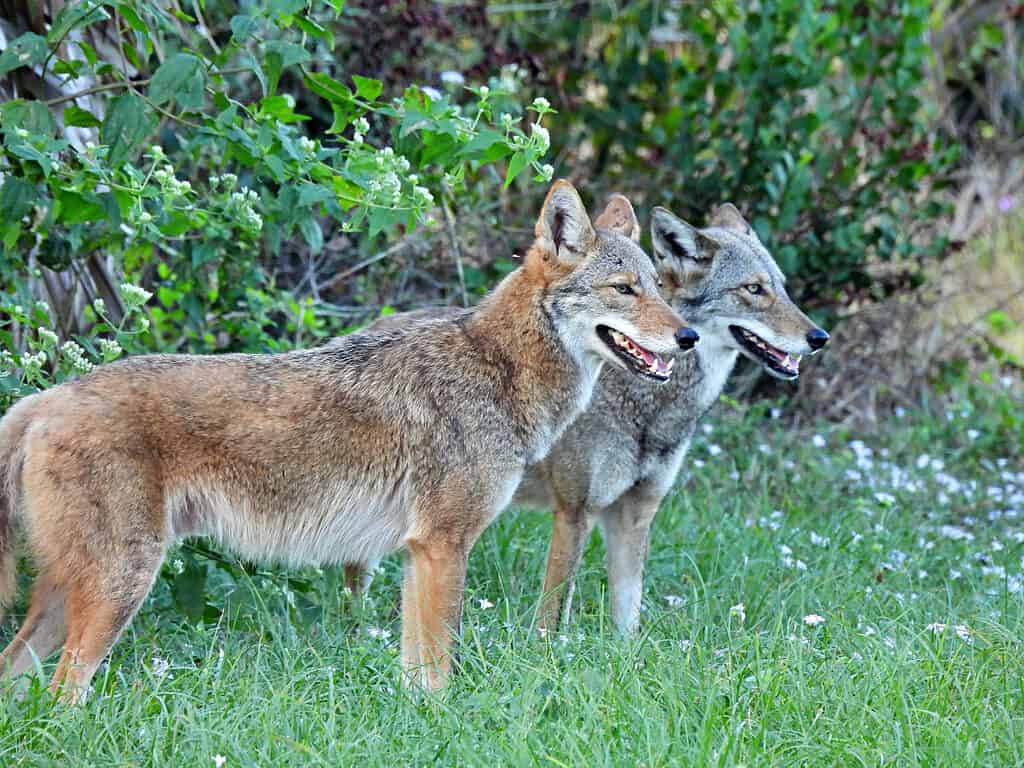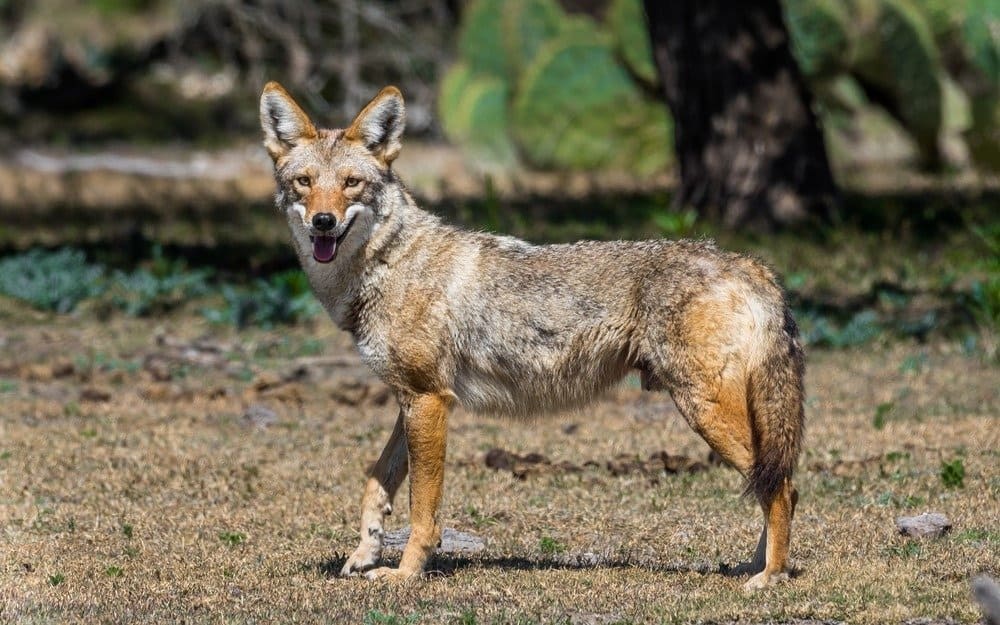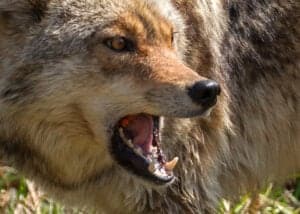Quick Answer:
- Coyotes use howling as a means of communication and to establish territory.
- Howling can also serve to bring members of a pack together and coordinate hunting efforts.

Coyotes often hunt alone or in pairs.
©iStock.com/passion4nature
From Alaska to Central America, coyotes, also known as prairie wolves, can be found in almost every corner of the continent. They prefer frigid locations as well as mountainous terrain and grasslands. Coyotes are often depicted as nocturnal creatures who howl at the moon in literature, art, and film. People often report hearing coyotes howling off in the distance at night. So, is there a logical explanation for why coyotes make sounds at night?
There are many reasons why coyotes make a lot of noise, particularly at night. But are there any lunar influences at play? Keep reading to find out!
Coyote Howling at Night

Coyotes make lots of noises at night. They are influenced by the light of the moon.
©JayPierstorff/Shutterstock.com
In the wild, coyotes use howling to communicate with one another when other prairie wolves are nearby. Believe it or not, coyotes don’t typically howl at the moon. Rather, it is the moonlight that causes coyotes to communicate verbally by howling. Below are examples of how the moonlight influences the coyote.
Advertising Territory
The moonlight allows coyotes to see their home region at night, enabling defending coyote packs to howl to inform intruders of their presence. Non-member coyotes are not allowed into their range. The home pack will protect its area with howls, whines, and barks to warn intruders that they are not welcome.
Foraging
When hunting, coyotes act in pairs typically, sometimes dividing to corner or seclude prey. The kill is a team effort, and the feast is shared. During hunting, howling is used to communicate position. Coyotes will hunt in the dim light of the moon because it is easier to surprise their prey in the dark than in the light of day.
Distracting Predators
Coyotes also use the moon to spot and confuse predators at night. Predators may be drawn to a coyote pack’s burrow or den if coyote cubs are present. To defend their pups, coyote packs will swiftly split up, rushing away from the den and howling, confusing the predator. In this way, the predator will hunt the howling rather than the young coyotes.
The coyote group will cease howling and return to guard the baby coyotes while the predator is preoccupied. If the predator reappears, the cycle repeats itself.
What Sounds Do Coyotes Make?

These animals make a variety of sounds like yipping. growling, howling, laughing, and even screaming.
©Sam Carrera/Shutterstock.com
Coyotes are known for howling at the moon, but did you know coyotes make other sounds at night? Coyotes employ a variety of ways to communicate both day and night. These night-stalkers are so adaptive that many wildlife enthusiasts call them the ‘song dog’!
Sound Types and What They Mean
A coyote’s vocalizations might convey a great deal about its intent. Coyotes have a wide range of vocalizations, and they quickly learn to mimic the sounds they hear.
The following are the typical sounds a coyote makes:
- Yipping
- Growling
- Laughing
- Screaming
- Whining
- Barking
Yipping
Coyotes use yipping as a method of vocal communication to convey more painful feelings. To dog owners, the sound is like a high-intensity whine, which can be alarming! When a coyote gets scared, its normal vocal response is to make this noise. It’s possible that the coyote is distressed, and yipping is a symptom of it.
Growling
If a coyote feels threatened, it will growl to alert other animals that they are prepared to defend its area. It is the coyote’s technique of warning other animals that it will attack them if they get too close.
Laughing
Coyote yips and whistles can sound like laughter. Various screams, whines, and yips combine to create a boisterous symphony. This is commonly referred to as a “nightly celebration” by others.
Screaming
Screaming is one of the oddest coyote noises. This sound is a distress signal that sounds much like a woman screaming. Some find it frightening when they hear it in the middle of the night and can’t recognize it.
If you hear a coyote, make this sound, stay away from it unless you are a trained wildlife expert. Screaming coyotes often make this noise in response to a larger predator. Coyotes aren’t the only animal that screams at night, as foxes will also employ this vocalization.
Whining
People often confuse coyotes for domestic dogs because of their resemblance to the sounds made by domestic dogs, specifically whining. This is often a sign of submission for the coyote, or possible pain or injury.
Barking
It’s also common for coyotes to bark at people, dogs, and other large animals that infringe on their territory.
Conclusion

Howling coyotes are often called “song dogs” due to their wide range of noises.
©FRAYN/Shutterstock.com
Coyotes have a bad reputation because of their opportunistic feeding nature; however, their windpipes are among the most amazing in the entire canine world. Coyotes are North America’s most vocal animals since they are the honorary song dog! Using howls, whimpers, and much more, these dogs can find their way around and communicate. It’s certainly beautiful to listen to them sing on a chilly winter night.
To better understand these nocturnal animals, it is important for people to be aware of the different sounds they make. If you hear them howling, it doesn’t guarantee they’re dangerous, but always keep your guard up and be ready to act if you’re ever confronted by one.
The photo featured at the top of this post is © JayPierstorff/Shutterstock.com
Thank you for reading! Have some feedback for us? Contact the AZ Animals editorial team.





